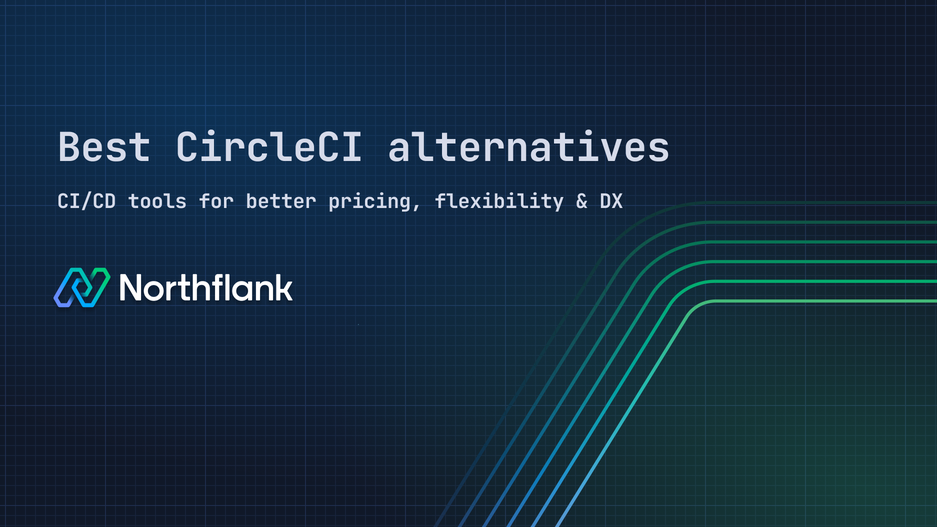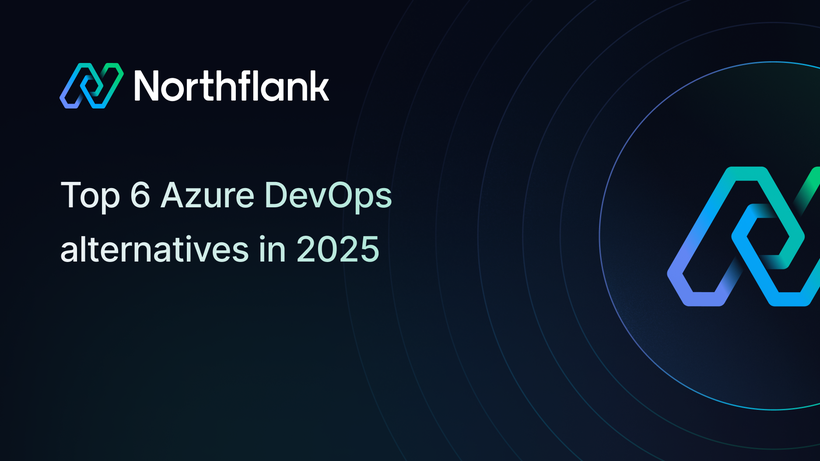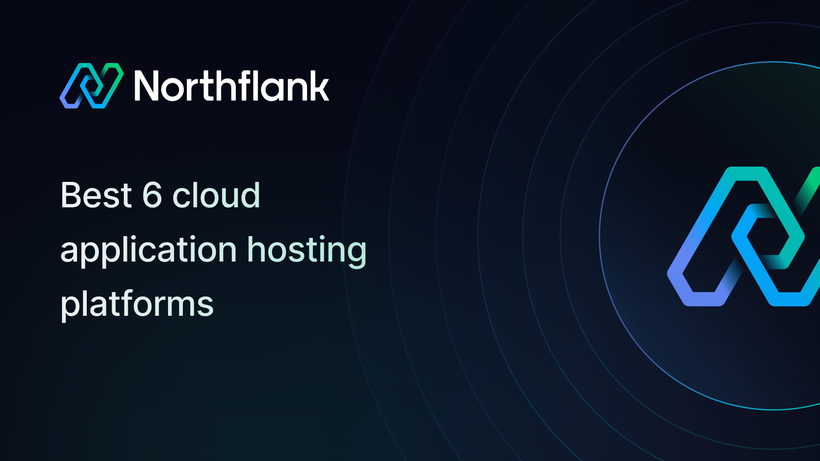

Top 5 CircleCI alternatives to use in 2025: best CI/CD tools
CircleCI still gets the job done — fast builds, YAML pipelines, solid Git integrations. But in 2025, "good enough" isn't cutting it anymore.
Engineering teams are moving fast, scaling up, and shifting toward container-native, GitOps-driven workflows. They're juggling microservices, Kubernetes clusters, and infrastructure-as-code — and they need CI/CD platforms that keep up without slowing them down.
The cracks are starting to show. Maybe you’ve hit the limits of YAML. Maybe billing feels opaque or deploy visibility is lacking. You’re not alone.
Whether you're looking for something more developer-friendly, Kubernetes-native, or just easier to scale, there are better options now.
Here’s a fresh look at 5 CircleCI alternatives worth trying in 2025 — platforms that offer modern DevOps workflows, less setup pain, and a better developer experience from commit to production.
Just want the list? Here are 5 CircleCI alternatives developers are turning to in 2025:
| Tool | Best For | Strength Highlight |
|---|---|---|
| Northflank | Dev-first and Cloud-native CI/CD + hosting | Simple, K8s-native, Docker-native, easy to integrate, Built-in preview envs. |
| Jenkins | Highly customizable CI/CD workflows | Open-source flexibility with a large plugin ecosystem |
| GitLab CI/CD | All-in-one DevOps platform | Integrated repo, CI/CD, and security pipelines |
| GitHub Actions | Small teams & automation fans | Seamless GitHub integration, fast setup |
| AWS CodePipeline | AWS-native workflows | End-to-end automation across AWS services |
CircleCI remains a powerful CI/CD tool, especially valued for its speed and seamless integration with Git-based workflows. Developers appreciate its flexibility and performance:
“What I like the best about CircleCI is its speed and flexibility, and automation of testing and user-friendly interface.”
— Kenneth Joy M., Developer (G2, Jan 2025)
“Since we have many versions of our app running for different clients, CircleCI allows us to deploy them all in a speedy and timely fashion.”
— Remmelt K., Senior iOS Developer (G2, Nov 2024)
But the praise is often tempered by real frustrations. Developers have flagged growing pain points that are hard to ignore in 2025:
Opaque Billing & Limited Visibility:
“Billing is a mess and nightmare! There is no transparency on how many build minutes and credits I spent each day... Support engineers do not thoroughly read and understand issues.”
— Kok How T., Verified User (G2, Nov 2023)
YAML Sprawl and Learning Curve:
“One of the downsides of CircleCI is the complexity of configuration for newbies or beginners, especially with advanced features.”
— Kenneth Joy M., Developer (G2, Jan 2025)
Scaling Costs for Larger Teams:
“It’s not as well suited for larger teams as the cost quickly scales up. It’s also not well suited for more complicated builds because the configuration process is pretty arcane.”
— Dillon Welch, Director of Engineering (TrustRadius)
If you’d like to dive deeper into the feedback, you can check out the full reviews here
Choosing the right CI/CD platform goes beyond just faster builds. It's about finding the right fit for your team's needs today. Here’s what you should keep in mind when considering alternatives:
Does the platform simplify your workflow or add friction? The best CI/CD tools offer an intuitive, easy-to-use experience, which leads to quicker onboarding and fewer roadblocks for your developers.
CI/CD should feel invisible. Look for tools with fast build times, smart caching, and consistent performance. You don’t want to be waiting for your pipeline to run or dealing with flaky results.
If you're working with containers or Kubernetes, make sure the platform natively supports these technologies. Whether it’s Docker or Helm charts, your CI/CD should integrate seamlessly with your containerized workflows.
Some platforms now offer more than just CI/CD — they handle deployment, hosting, and even environment management. If you want a one-stop solution, look for a tool like Northflank that can manage your environments and spin up live previews automatically.
As your team and services grow, the CI/CD platform should scale effortlessly. It should support multiple teams and repos without dramatically increasing costs or complexity. Make sure it can handle your growth without the growing pains.
Your CI/CD tool should integrate smoothly with your existing stack — whether that's GitHub, Slack, Terraform, or whatever tools your team already uses. Plus, consider built-in support for infra-as-code and secrets management.
CI/CD costs can spiral quickly. Look for a pricing model that’s transparent, with no hidden costs. You’ll want something that scales fairly with your team and doesn’t penalize you as you grow.
For teams running machine learning, AI, or GPU-accelerated jobs, support for GPU-enabled runners is a game-changer. Some newer platforms now offer native GPU support to handle these increasingly common workflows.
With growing compliance needs (like GDPR), it's worth checking whether your CI/CD provider offers control-plane hosting or data residency in specific regions — especially if you're operating in the EU or other regulated environments.
CircleCI works, but if you're looking for something that fits modern workflows better, here are 5 alternatives to check out in 2025.
Northflank is a CI/CD platform that’s optimized for Kubernetes-native and containerized applications. It’s designed to simplify the deployment pipeline, offering powerful automation while maintaining a focus on scalability, flexibility, and ease of use.
Northflank stands out with its deep integration into cloud-native technologies, particularly Kubernetes, making it ideal for modern, containerized workloads. Unlike some traditional CI/CD platforms, it doesn’t require complex configuration or manual scaling, allowing teams to quickly set up, scale, and automate their deployment processes without hassle.

Pros:
- Seamless Kubernetes integration
- Automatic horizontal scaling
- Built-in CI/CD and logging
- Native GPU workload support for AI/ML pipelines
- EU-based control-plane option for data residency
- Transparent pricing with no hidden costs
Cons:
- Smaller community compared to CircleCI
Why Choose Northflank Over CircleCI?
- More advanced automation and CI/CD features.
- Greater flexibility in cloud provider selection.
- Kubernetes-native with built-in auto-scaling.
- Lower costs with transparent pricing models.
- Enterprise-grade security and compliance tools.
Jenkins remains one of the most popular CI/CD tools due to its flexibility and extensive plugin ecosystem. While it requires manual setup and maintenance, it’s a great option for teams that want full control over their pipelines.

Pros:
- Highly customizable with thousands of plugins
- Free and open-source
- Supports self-hosted and cloud deployments
Cons:
- Requires manual scaling
- Steeper learning curve for beginners
GitLab CI/CD is a natural choice for teams already using GitLab. It offers built-in CI/CD functionality, making it easy to integrate with repositories.

Pros:
- Seamlessly integrated with GitLab repositories
- Built-in security scanning and compliance tools
- Supports both cloud and self-hosted deployment
Cons:
- Can be resource-intensive for large projects
- Limited customization compared to Jenkins
AWS CodePipeline is a fully managed CI/CD service that integrates seamlessly with other AWS services, making it ideal for teams deeply embedded in the AWS ecosystem.

Pros:
- Deep integration with AWS services
- Fully managed with automatic scaling
- Pay-as-you-go pricing
Cons:
- Limited flexibility outside AWS
- Can be complex to configure for non-AWS users
GitHub Actions is a powerful CI/CD automation tool built directly into GitHub, making it an excellent choice for teams already using GitHub for version control. It allows developers to create custom workflows that automate building, testing, and deployment processes with minimal setup.

Pros:
- Seamless GitHub integration
- Flexible and customizable
- Rich marketplace of pre-built actions
- Scalable and secure
Cons:
- Limited outside GitHub
- Costly for larger workloads
- Complex workflows require experience
When picking a new CI/CD tool, think about how your team works today.
If you need a simple, Heroku-like experience with CI/CD and hosting in one platform, Northflank is a strong choice — no complex setup or tool sprawl.
For teams embracing Kubernetes and GitOps, Northflank and Jenkins are great options. Northflank makes it easier to get started with less overhead.
Already using GitHub? GitHub Actions is a solid pick. But if you need more flexibility and control, Northflank integrates smoothly and adds a lot of extra power for scaling.
If you need a more full-stack DevOps solution, GitLab CI/CD is powerful but heavy. Northflank delivers a more streamlined experience while covering similar needs, especially for containerized apps.
And for teams deep in the AWS ecosystem, CodePipeline might work, but Northflank offers cross-cloud flexibility without locking you into a single provider.
CircleCI paved the way for modern CI/CD, but the landscape has changed. Today’s teams need more than just fast builds — they need platforms that keep up with containers, Kubernetes, and how developers actually ship software in 2025.
If you’re feeling the friction — whether it’s YAML fatigue, billing headaches, or toolchain sprawl — it might be time to try something built for the way you work now.
That’s where Northflank comes in. It combines CI/CD, deployment, hosting, and database management into one clean platform, designed for containerized apps and modern DevOps workflows. You get the power of Kubernetes without the ops burden, and the flexibility to grow without hidden costs.
Start small, spin up a preview env, or move your whole stack — no pressure. Northflank makes it easy to test the waters with generous free tier, solid docs, and a workflow that just makes sense.
Sign up, check out the guides, or take it for a spin and see how smooth CI/CD can actually feel.


